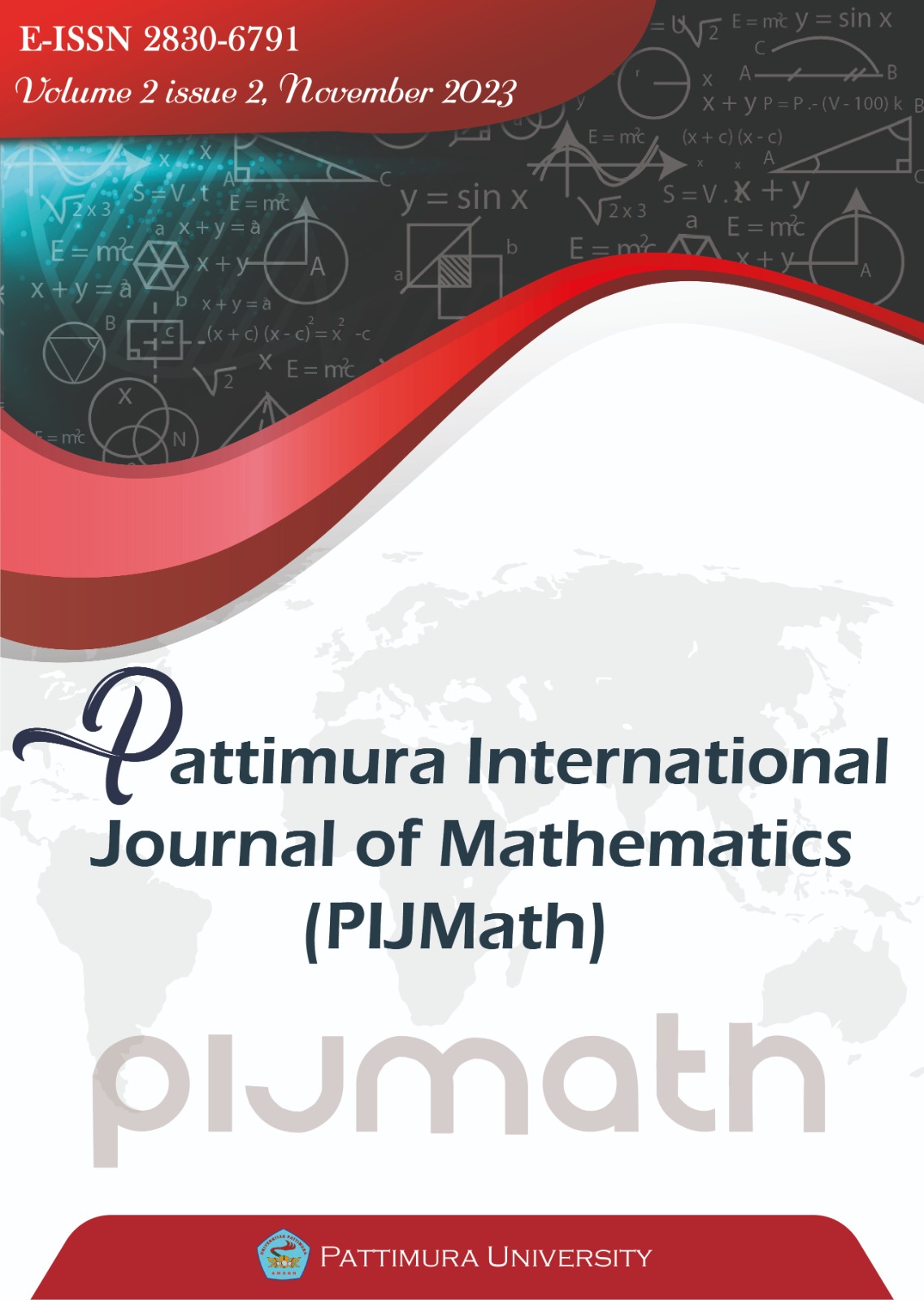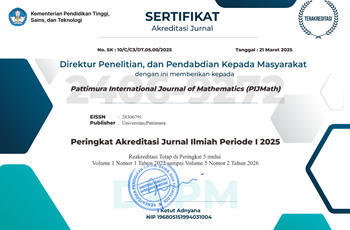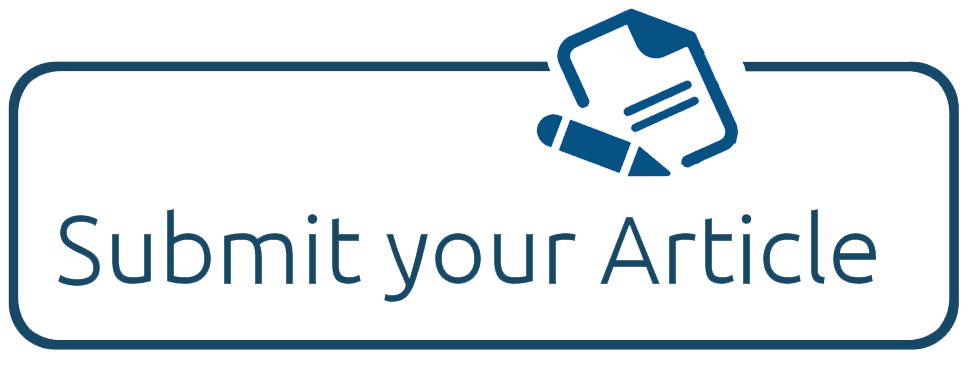Application of the K-Means Algorithm for Clustering Production of Capture Fisheries in Maluku Province
Abstract
Maluku Province has large natural resources with various potentials, from the ocean floor to the mainland. Capture fishery products are one of the leading sectors that contribute greatly to the GRDP of Maluku Province. The K-Means clustering algorithm is a suitable algorithm for grouping data objects that have the same identity. The purpose of this study is to cluster districts/cities in Maluku Province based on capture fishery products. The type of data in this study is secondary data sourced from the Maluku Province Central Bureau of Statistics (BPS) Publication in 2022. The result is that there are 3 districts/cities clusters in Maluku Province based on capture fishery products. Cluster 1 with the category of sufficient capture fisheries products, namely the Districts of Tanimbar Islands, Buru, East Seram, West Seram, South Buru, Southwest Maluku, Ambon City and Tual City. Furthermore, Cluster 2 with the category of many capture fishery products, namely the Aru Islands Regency and Southeast Maluku Regency. Furthermore, for Cluster 3, the category of capture fishery products is very large, namely Central Maluku Regency.
Downloads
References
[2] I. M. Faiza, G. Gunawan, and W. Andriani, “Tinjauan Pustaka Sistematis: Penerapan Metode Machine Learning untuk Deteksi Bencana Banjir,” J. Minfo Polgan, vol. 11, no. 2, pp. 59–63, Aug. 2022, doi: 10.33395/jmp.v11i2.11657.
[3] F. S. Pamungkas, B. D. Prasetya, and I. Kharisudin, “Perbandingan Metode Klasifikasi Supervised Learning pada Data Bank Customers Menggunakan Python,” vol. 3, 2020.
[4] M. I. Fikri, T. S. Sabrila, and Y. Azhar, “Perbandingan Metode Naïve Bayes dan Support Vector Machine pada Analisis Sentimen Twitter,” SMATIKA J., vol. 10, no. 02, pp. 71–76, Dec. 2020, doi: 10.32664/smatika.v10i02.455.
[5] Desta Yolanda, Mohammad Hafiz Hersyah, and Eno Marozi, “Implementasi Metode Unsupervised Learning Pada Sistem Keamanan Dengan Optimalisasi Penyimpanan Kamera IP,” J. RESTI Rekayasa Sist. Dan Teknol. Inf., vol. 5, no. 6, pp. 1099–1105, Dec. 2021, doi: 10.29207/resti.v5i6.3552.
[6] E. Retnoningsih and R. Pramudita, “Mengenal Machine Learning Dengan Teknik Supervised Dan Unsupervised Learning Menggunakan Python,” BINA INSANI ICT J., vol. 7, no. 2, p. 156, Dec. 2020, doi: 10.51211/biict.v7i2.1422.
[7] A. Sulistiyawati and E. Supriyanto, “Implementasi Algoritma K-means Clustring dalam Penetuan Siswa Kelas Unggulan,” J. Tekno Kompak, vol. 15, no. 2, p. 25, Aug. 2021, doi: 10.33365/jtk.v15i2.1162.
[8] N. Sepriyanti, R. S. Nahampun, M. H. Zikri, I. Ambarani, and A. Rahmadeyan, “Implementation of K-Means Clustering to Group Poverty Levels in Riau Province,” 2022.
[9] M. A. Mutaqin and W. Andriyani, “Klasterisasi Data Disabilitas Menggunakan Algoritma K-Means,” vol. 3, no. 1, 2022.
[10] D. Bahtiar, “Pemetaan Penduduk Penerima Bantuan Sosial Desa Waru Jaya Menggunakan Algoritma K-Means Clustering,” vol. 3, no. 2, 2023.
[11] M. Y. Matdoan, U. A. Matdoan, and M. S. Far-far, “Algoritma K-Means Untuk Klasifikasi Provinsi di Indonesia Berdasarkan Paket Pelayanan Stunting,” vol. 1, no. 2, 2022.
[12] F. Febriansyah and S. Muntari, “Penerapan Algoritma K-Means untuk Klasterisasi Penduduk Miskin pada Kota Pagar Alam,” JISKA J. Inform. Sunan Kalijaga, vol. 8, no. 1, pp. 66–77, Jan. 2023, doi: 10.14421/jiska.2023.8.1.66-77.
[13] N. Nurahman and J. Susanto, “Klasterisasi Data Penerima Bantuan Langsung Tunai Menggunakan Algoritma K-Means,” JURIKOM J. Ris. Komput., vol. 10, no. 2, p. 461, Apr. 2023, doi: 10.30865/jurikom.v10i2.5807.
[14] A. Y. Permana, “Analisis dan Penerapan Metode Klasterisasi Menggunakan Algoritma K-Means Untuk Pengelompokkan Order Produk Pada PT. Arthautama Plasindo,” Vol. 10, 2019.
[15] Y. Prastyo, “Pembagian Tingkat Kecanduan Game Online Menggunakan K-Means Clustering serta Korelasinya Terhadap Prestasi Akademik,” Elinvo Electron. Inform. Vocat. Educ., vol. 2, no. 2, pp. 138–148, Dec. 2017, doi: 10.21831/elinvo.v2i2.17307.
[16] M. Y. Matdoan, F. Y. Risdiana, and G. Haumahu, “Application of the K-Means Cluster for the Classification of Disadvantaged Districts/Cities in Maluku Province,” JRST J. Ris. Sains Dan Teknol., vol. 6, no. 1, p. 61, Nov. 2022, doi: 10.30595/jrst.v6i1.11637.
Copyright (c) 2023 M. Y Matdoan, Nur A. Purnamasari, Novita S. Laamena

This work is licensed under a Creative Commons Attribution-NonCommercial 4.0 International License.
The author(s) hold the copyright of the published article without restriction. This policy means that the journal allows the author(s) to hold and retain publishing rights without restrictions.
The author(s) holds the copyright of published articles without limitation. This policy means that the journal allows the author to hold and retain publishing rights without restrictions. Journal editors are given the copyright to publish articles in according to agreement signed by the author and also include statement of originality of the article


.jpg)












 This work is licensed under a
This work is licensed under a 